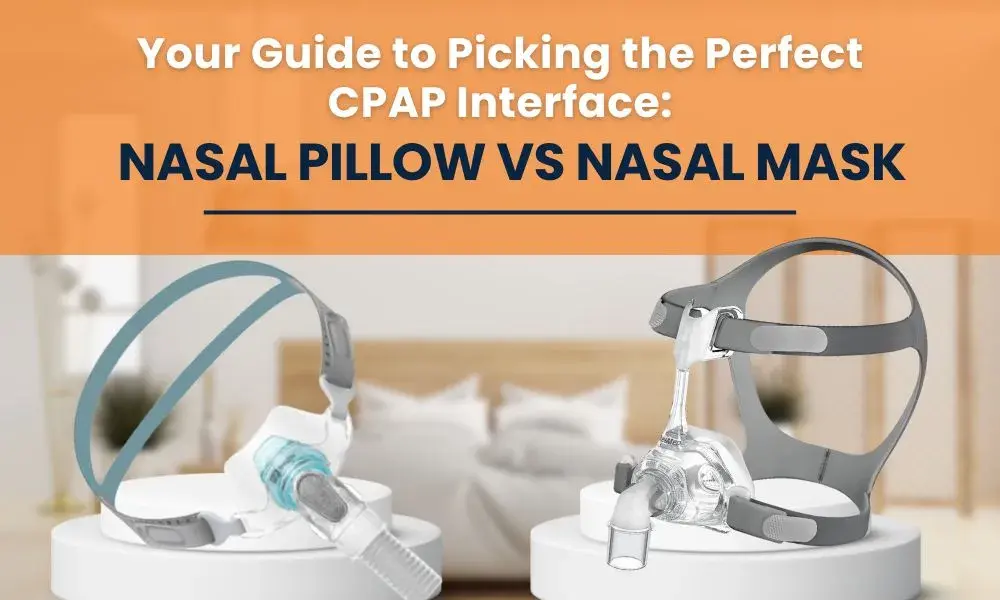Living with sleep apnoea can be challenging, especially when it comes to maintaining an active lifestyle. However, with the positive impact of CPAP therapy, individuals can experience improved sleep quality, increased energy levels, and ultimately boost their physical activity.
At Rockingham CPAP, we have assisted many clients improve their activity levels whilst on CPAP therapy, so we have used our experience to develop this article to help you. Let’s explore how CPAP therapy can have a profound effect on daily life and how it can help you lead a more active and healthier lifestyle.
Understanding CPAP and Its Role in Combatting OSA
CPAP, or Continuous Positive Airway Pressure, is a lifesaver for those battling obstructive sleep apnoea (OSA), a condition characterised by temporary pauses in breathing during sleep due to the blockage of the upper airway. This marvel of medical technology ensures a steady stream of air keeps the airway open, facilitating seamless breathing and uninterrupted sleep.
The essence of CPAP therapy lies in its ability to tackle the root cause of sleep interruptions, offering a night of restful sleep. As a result, it not only combats the symptoms of OSA but also significantly enhances the quality of life for its users. By understanding the pivotal role CPAP plays in managing sleep apnoea, you can appreciate the transformative impact it has on their health, paving the way for a more energetic and active lifestyle.
The Direct Link Between Quality Sleep and Physical Activity
The relationship between getting a good night’s sleep and being able to maintain an active, energetic lifestyle is stronger than many might realise. When sleep apnoea is effectively managed with CPAP therapy, individuals often notice a marked improvement in their sleep quality. This enhancement in sleep directly translates to higher energy levels during the day, fostering an environment where engaging in regular exercise becomes more appealing and manageable.
Quality sleep acts as the foundation of physical health, enabling our bodies to recover and rejuvenate overnight. With CPAP therapy ensuring that this crucial recovery process occurs uninterrupted, individuals are better equipped to tackle physical activities and embrace a more dynamic lifestyle. This improvement in sleep quality not only boosts daytime energy but also positively influences mood and mental clarity, which are essential components in finding the motivation to exercise and stay active.
Embracing CPAP therapy can therefore be a game-changer for those looking to invigorate their daily routine with increased physical activity, offering a pathway to enhanced wellbeing and a zest for life.
Impact of CPAP on Daily Life: Energising Your Routine
The adoption of CPAP therapy can lead to a remarkable transformation in your daily life, primarily by bestowing upon you levels of energy you might not have thought possible. After consistently using CPAP to manage sleep apnoea, many report waking up feeling more revitalised and ready to take on the day. This newfound vigour directly impacts one’s ability to engage in and enjoy physical activities, making tasks that once seemed daunting, entirely achievable. It opens a world where you can confidently plan for a morning jog, an evening cycle, or perhaps a vigorous workout session without the shadow of fatigue looming over you.
This increase in energy can inspire a ripple effect, encouraging a more enthusiastic approach to life’s responsibilities and hobbies alike. Whether it’s pursuing outdoor adventures, diving into new fitness routines, or simply keeping up with the kids in the park, the enhanced energy levels courtesy of effective CPAP therapy can be a game-changer.
It’s important to acknowledge that this journey might require adjustments and a bit of patience as you find the right balance for your lifestyle. Embracing this proactive stance towards CPAP therapy can indeed make every morning a promise for an active, fulfilling day ahead.
Tips for an Active Lifestyle with CPAP
Embracing an active lifestyle whilst on CPAP therapy isn’t just a possibility—it’s a reality for many. By adopting a few strategic habits, you can significantly enhance your journey towards better health and vitality.
Tip 1: Structure Your Exercise and Keep It Exciting
It’s crucial to kick off with a well-structured exercise regime that suits your interests and physical capabilities. Tailoring your activities ensures you stay engaged and motivated. Establish realistic and incremental goals to keep a sense of achievement alive, fuelling your desire to push forward.
Tip 2: Stay Hydrated
Hydration plays a pivotal role in maximising your workout efficiency, especially when you’re on CPAP therapy. Drinking plenty of water throughout the day aids in keeping your energy levels up and supports your body’s recovery process post-exercise. Listening to your body is key; it will guide you on when to push harder or take a much-needed rest, preventing burnout and injury.
By integrating these practical tips into your daily routine, alongside regular CPAP use, you’re not just dreaming of a more active lifestyle but actually living it.
Overcoming Challenges: Staying Active with CPAP
Starting to live an active lifestyle whilst managing sleep apnoea with CPAP therapy might present a few hurdles along the way. It’s natural to encounter days when energy seems scarce or when the CPAP mask feels more like a hindrance than a help. Additionally, carving out time for exercise amidst a busy schedule can sometimes feel like an insurmountable task. However, overcoming these obstacles is entirely possible with the right mindset and strategies.
Firstly, understanding that initial fatigue will gradually give way to increased vitality as your body adjusts to consistent CPAP use is crucial. If mask discomfort arises, don’t hesitate to consult with our team at Rockingham CPAP for adjustments or alternative options that better suit your comfort. Prioritising exercise by scheduling it as you would any important appointment can also make a significant difference, ensuring it becomes a non-negotiable part of your day.
Re-energise Yourself with Rockingham CPAP
Remember, every step taken towards maintaining an active lifestyle, no matter how small, is a victory in itself. With persistence and the support of the CPAP therapy community, you can navigate these challenges successfully, making an active, fulfilling lifestyle not just a goal but a reality.
Your CPAP therapy doesn’t need to slow you down. At Rockingham CPAP, our team of accredited sleep technicians can discuss with you how active you want to be and then recommend the best type of CPAP machine that can support your lifestyle.
Start living you best life by booking a consultation. Contact us or call the team on (08) 6186 6636. We can’t wait to help you rediscover your zest for life.



